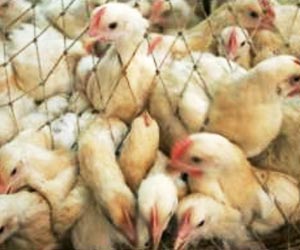Some strains of bird flu have moved a step closer to developing the traits required to cause a human pandemic, according to a new research.
New research indicates that the bird flu virus is very close to mutating and could trigger a human pandemic very soon.
Researchers at the US Centres for Disease Control and Prevention (CDC) in Atlanta found that a strain of the virus called H7N2 had adapted slightly better to living in mammals.Led by Terrence Tumpey, the study shows that while there is no direct indication that H7 flu is about to acquire potentially damaging mutations, it is vital that global inspection and research covers this virus class as well as the more obvious H5N1.
For the study, the researchers analysed samples of recent avian flu viruses and found that a few H7 strains of the virus that have caused minor, untransmissible infections in people in North America between 2002 and 2004 have increased their affinity for the sugars found on human tracheal cells.
Subsequent tests in ferrets showed that these viral strains were not readily transmissible.
However, one strain of the H7N2 virus, a low pathogenic avian flu strain isolated from a man in New York in 2003, replicated in the ferret's respiratory tract and was passed between infected and uninfected ferrets suggesting it could be transmissible in humans.
The team said that the evidence suggests that the virus could be evolving toward the same strong sugar-binding properties of the three worldwide viral pandemics in 1918, 1957 and 1968.
Advertisement
"The finding ... underscores the necessity for continued surveillance and study of these viruses as they continue to resemble viruses with pandemic potential," he added.
Advertisement
The H7 family of flu viruses also primarily affects birds. A deadly version of the H7N7 strain hit poultry in the Netherlands in 2003, and a less severe form, H7N2, broke out in the UK last year. Between 2002 and 2004 several outbreaks of H7N3 and H7N2 have been reported.
The study is published in the journal Proceedings of the National Academy of Sciences.
Source-ANI
RAS/L






